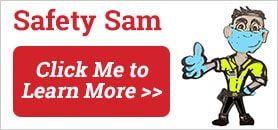
Uniforms are essential for workplace and safety compliance.
In many industries, uniforms serve as more than just a means of identification—they play a crucial role in workplace safety and regulatory compliance. From construction sites to medical facilities, uniforms help create a secure and professional environment, reducing risks and ensuring that employees meet industry standards. Understanding the impact of uniforms on workplace safety and compliance can help businesses foster a safer and more efficient work environment.
Enhancing Safety Through Proper Attire
One of the primary benefits of workplace uniforms is their contribution to employee safety. Different industries have unique risks, and the right uniform can mitigate potential hazards. For example:
- High-Visibility Clothing: Workers in construction, road maintenance, and other outdoor jobs often wear high-visibility uniforms with reflective materials. These uniforms enhance visibility, reducing the risk of accidents involving heavy machinery or passing vehicles.
- Flame-Resistant (FR) Fabrics: Employees in industries such as electrical work, welding, and oil and gas are exposed to fire hazards. Flame-resistant uniforms protect workers from burns and comply with safety standards set by organizations like OSHA (Occupational Safety and Health Administration).
- Protective Footwear and Gloves: Many workplaces require specialized footwear and gloves to prevent injuries from sharp objects, chemicals, or electrical hazards.
- Medical and Laboratory Uniforms: Healthcare professionals and lab technicians wear scrubs, lab coats, and other protective clothing to prevent cross-contamination and protect against exposure to hazardous substances.
Compliance with Industry Regulations
Regulatory bodies set strict guidelines regarding workplace attire, ensuring that employees are adequately protected. Businesses that enforce uniform policies help their employees comply with industry regulations, reducing the risk of fines and legal consequences. Some key regulations include:
- OSHA Standards: OSHA mandates the use of personal protective equipment (PPE) in various industries, including construction, manufacturing, and healthcare. Uniforms often serve as part of an employee’s PPE, helping businesses meet compliance requirements.
- FDA and HACCP Guidelines: In food service and production, uniforms must meet specific cleanliness and safety standards. Hairnets, gloves, and protective clothing help prevent contamination and ensure compliance with FDA and Hazard Analysis and Critical Control Points (HACCP) regulations.
- ANSI Standards: The American National Standards Institute (ANSI) sets requirements for high-visibility clothing in construction and roadwork industries to reduce accidents and fatalities.
Promoting a Professional and Organized Work Environment
Uniforms not only improve safety and compliance but also contribute to a more professional and organized workplace. Employees in well-maintained uniforms project a sense of responsibility and discipline, which can positively impact customer perception and workplace morale. Additionally, standardized attire helps distinguish employees from visitors, enhancing security and preventing unauthorized individuals from accessing restricted areas.
Uniform Services from Ace Uniform
To give your business a clean, professional, and cohesive look, rely on Ace Uniform. Whether you need uniforms in the food, automotive, industrial, construction, medical, security, or you-name-it industry, we can provide you with the uniforms you need for the price you want. We can also supply your business with high-quality mats and towels. On top of that, Ace offers facility services that can help keep your business place clean and safe. Give us a call at 1-800-366-1616 or visit us online to learn how we can help meet your needs. Want to get to know us even better? Visit us on social media on Facebook, Pinterest, Twitter, and LinkedIn.

